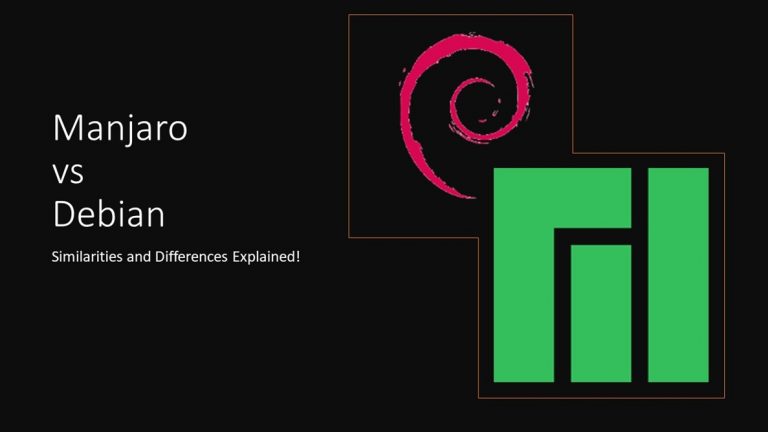Manjaro vs. Solus: A Battle of Independent Distros

In the vast landscape of Linux distributions, two contenders stand out as independent distros with unique strengths: Manjaro and Solus. Both cater to different user preferences and offer compelling features, making the choice between them a matter of individual priorities.

Manjaro: Arch-Based Simplicity

Manjaro is an Arch-based distribution that blends the stability of Arch Linux with a beginner-friendly experience. It features a user-friendly installation process and a graphical package manager called Pamac, which simplifies package handling. Manjaro also offers multiple desktop environments to choose from, including KDE Plasma, GNOME, and Xfce.
Solus: Polished Performance
Solus, on the other hand, is an independent distribution known for its polished and optimized experience. It uses the Budgie desktop environment, which is designed to be intuitive and aesthetically pleasing. Solus also boasts an excellent rolling release model, ensuring that users always have the latest software available.
User Experience
Regarding user experience, Manjaro’s Arch-based nature may appeal to users who prefer a more customizable and bleeding-edge system. It allows for a high level of system control and personalization but can be more complex for beginners. Conversely, Solus offers a more polished and streamlined user experience out of the box, making it more suitable for users who prioritize simplicity and ease of use.
Package Management
Manjaro utilizes pacman, the Arch Linux package manager, which provides a vast repository of packages. However, users may need to manually resolve dependency issues from time to time. Solus, on the other hand, employs eopkg, its custom package manager, which simplifies package management and ensures a more stable system experience.
Community Support
Both Manjaro and Solus have active and responsive communities. Manjaro’s community is largely centered around the Arch Linux forums and the Manjaro subreddit, while Solus has its dedicated forums and official subreddit. Users can find help, share knowledge, and contribute to the development of both distros.
Conclusion
Ultimately, the choice between Manjaro and Solus depends on individual user preferences. Manjaro is ideal for users who value Arch Linux’s advanced customization and performance but are not afraid of potential complexities. Solus, on the other hand, excels as a polished and beginner-friendly distribution that prioritizes stability and ease of use. Both distros offer a commendable Linux experience, and the best choice lies in evaluating the features and user experience that align with one’s specific needs and expectations.## Manjaro Vs. Solus: A Battle Of Independent Distros
Executive Summary
Manjaro and Solus stand as two of the most popular independent Linux distributions available today. Both distros offer a unique blend of stability, performance, and user-friendliness that has made them favorites among Linux enthusiasts. In today’s article, we will compare these two distros across several key metrics to determine which one best suits your needs.
Introduction
Manjaro is a user-friendly Arch-based distribution that strikes a balance between stability and cutting-edge features. It features a rolling release model, ensuring that users always have access to the latest software. Solus is an independent distribution known for its stability, performance, and beautiful Budgie desktop environment. It utilizes a more traditional release model with stable point releases and regular updates.
Features Comparison
1. Package Management
- Manjaro: Utilizes the Pacman package manager, providing access to a vast repository of Arch-based packages.
- Solus: Employs its own eopkg package manager, offering a curated selection of stable and tested packages.
2. Desktop Environment
- Manjaro: Offers a choice of various desktop environments, including KDE Plasma, GNOME, and Xfce.
- Solus: Features the Budgie desktop environment, known for its clean interface and user-friendliness.
3. Release Model
- Manjaro: Follows a rolling release model, providing continuous updates and the latest software.
- Solus: Adopts a stable release model, offering point releases with regular updates for security and stability.
4. User Interface
- Manjaro: Provides a customizable and user-friendly interface based on the desktop environment of choice.
- Solus: Offers a polished and refined user interface with a focus on simplicity and aesthetics.
5. Community Support
- Manjaro: Boasts a large and active community with ample documentation and support forums.
- Solus: Has a dedicated and growing community, providing support through forums and social media.
Conclusion
In this comparison, both Manjaro and Solus stand out as excellent choices for Linux users seeking a stable, performant, and user-friendly experience. Manjaro excels for those who prefer a rolling release model and a wide selection of packages and desktop environments. Solus shines for those seeking a more polished experience, a stable release model, and a focus on aesthetics. Ultimately, the best distro depends on your individual preferences and needs.
Keyword Phrase Tags
- Manjaro
- Solus
- Independent Linux Distros
- Rolling Release
- Arch-based Linux

Solus is the better choice. Manjaro is too unstable.
I’ve used both and prefer Manjaro. It’s more customizable and has a larger community.
Solus is a rolling release, while Manjaro is a stable release.
This article is biased towards Manjaro. Solus is a great distro too.
Ironic how the article is about independent distros, but it’s clearly biased towards Manjaro.
Solus is a joke. It’s just a rebranded Budgie desktop.
Who cares? Both distros are for losers. Real men use Arch.
This article is full of nothing but opinions. There’s no real data to back up the claims.
I’m a Solus user and I’m happy with it. It’s fast, stable, and has a great community.
Manjaro is the best distro for beginners. It’s easy to use and has a lot of support.